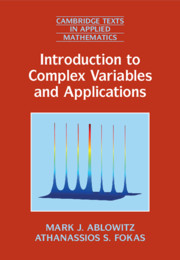Refine search
Actions for selected content:
36808 results in Cambridge Textbooks
10 - Application Testing
-
- Book:
- Essentials of Software Testing
- Published online:
- 19 August 2021
- Print publication:
- 19 August 2021, pp 193-229
-
- Chapter
- Export citation
13 - Testing in the Software Process
-
- Book:
- Essentials of Software Testing
- Published online:
- 19 August 2021
- Print publication:
- 19 August 2021, pp 278-286
-
- Chapter
- Export citation
6 - Branch Coverage
-
- Book:
- Essentials of Software Testing
- Published online:
- 19 August 2021
- Print publication:
- 19 August 2021, pp 99-112
-
- Chapter
- Export citation
Contents
-
- Book:
- Introduction to Water Resources and Environmental Issues
- Published online:
- 26 November 2021
- Print publication:
- 19 August 2021, pp v-x
-
- Chapter
- Export citation
14 - Wrap Up
-
- Book:
- Essentials of Software Testing
- Published online:
- 19 August 2021
- Print publication:
- 19 August 2021, pp 287-297
-
- Chapter
- Export citation
Contents
-
- Book:
- Game Theory Basics
- Published online:
- 22 October 2021
- Print publication:
- 19 August 2021, pp v-viii
-
- Chapter
- Export citation
Apéndice 3: - Listado de vocabulario académico en español
-
- Book:
- En Contexto
- Published online:
- 07 August 2021
- Print publication:
- 19 August 2021, pp 225-230
-
- Chapter
- Export citation
Appendix: Running the Examples
-
- Book:
- Essentials of Software Testing
- Published online:
- 19 August 2021
- Print publication:
- 19 August 2021, pp 298-298
-
- Chapter
- Export citation
Apéndice 5: - Guía y hojas de revisión entre compañeros, código y registro de errores formales
-
- Book:
- En Contexto
- Published online:
- 07 August 2021
- Print publication:
- 19 August 2021, pp 233-240
-
- Chapter
- Export citation
4 - Decision Table Testing
-
- Book:
- Essentials of Software Testing
- Published online:
- 19 August 2021
- Print publication:
- 19 August 2021, pp 60-85
-
- Chapter
- Export citation
Apéndice 2: - Uso y aplicación de reglas básicas de puntuación
-
- Book:
- En Contexto
- Published online:
- 07 August 2021
- Print publication:
- 19 August 2021, pp 219-224
-
- Chapter
- Export citation
Frontmatter
-
- Book:
- Essentials of Software Testing
- Published online:
- 19 August 2021
- Print publication:
- 19 August 2021, pp xvi-xvi
-
- Chapter
- Export citation
Dedication
-
- Book:
- En Contexto
- Published online:
- 07 August 2021
- Print publication:
- 19 August 2021, pp v-vi
-
- Chapter
- Export citation
Preface
-
- Book:
- Introduction to Water Resources and Environmental Issues
- Published online:
- 26 November 2021
- Print publication:
- 19 August 2021, pp xi-xiv
-
- Chapter
- Export citation
11 - Bargaining
-
- Book:
- Game Theory Basics
- Published online:
- 22 October 2021
- Print publication:
- 19 August 2021, pp 299-332
-
- Chapter
- Export citation
6 - Mixed Equilibrium
-
- Book:
- Game Theory Basics
- Published online:
- 22 October 2021
- Print publication:
- 19 August 2021, pp 135-168
-
- Chapter
- Export citation
Apéndice 6: - Resumen (actividad 1.12, p. 13)
-
- Book:
- En Contexto
- Published online:
- 07 August 2021
- Print publication:
- 19 August 2021, pp 241-242
-
- Chapter
- Export citation
13 - Roles of Federal, Regional, State, and Local Water Management Agencies
-
- Book:
- Introduction to Water Resources and Environmental Issues
- Published online:
- 26 November 2021
- Print publication:
- 19 August 2021, pp 371-406
-
- Chapter
- Export citation

Introduction to Complex Variables and Applications
-
- Published online:
- 18 August 2021
- Print publication:
- 25 March 2021
-
- Textbook
- Export citation

Modern Communications
- A Systematic Introduction
-
- Published online:
- 18 August 2021
- Print publication:
- 22 July 2021
-
- Textbook
- Export citation
